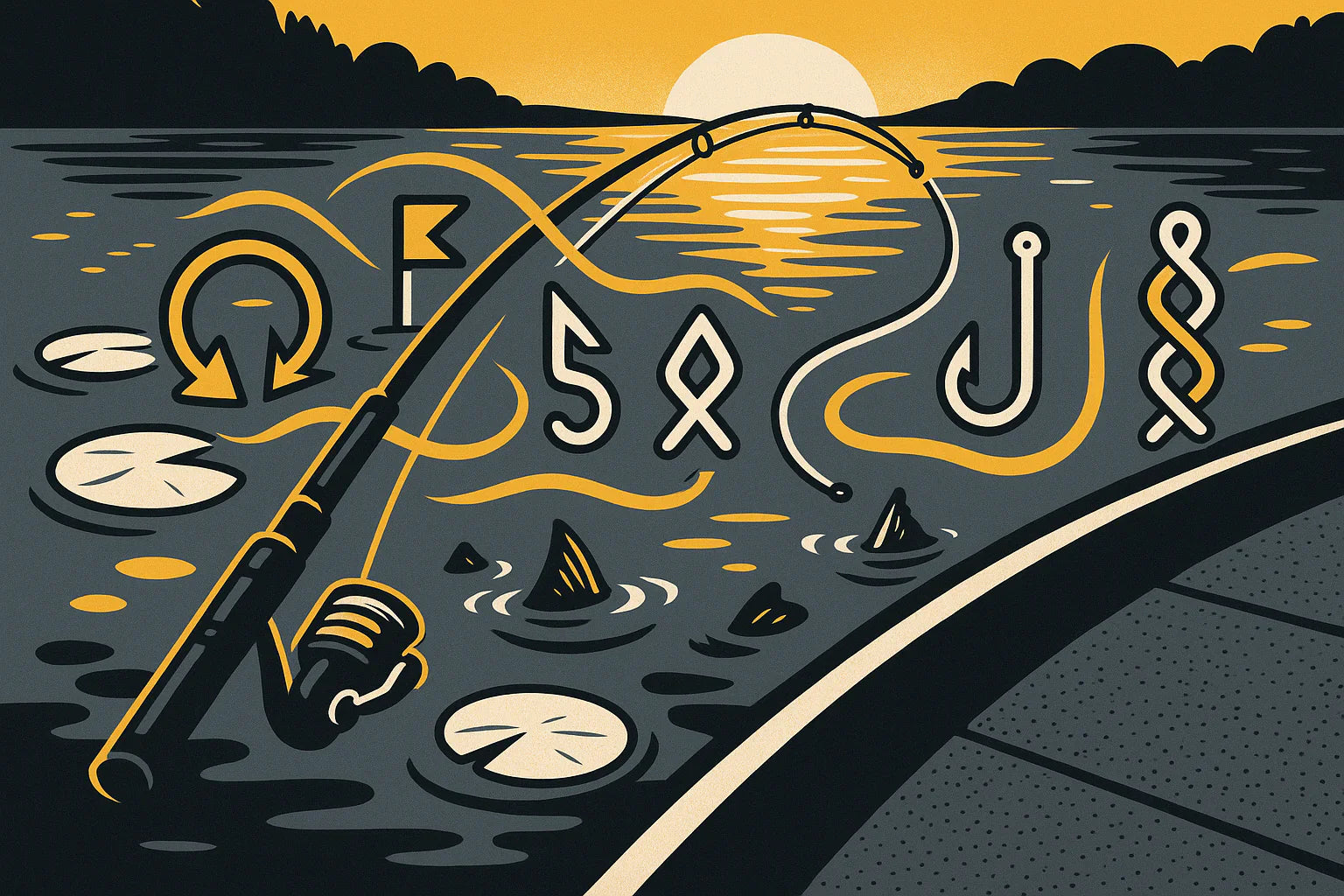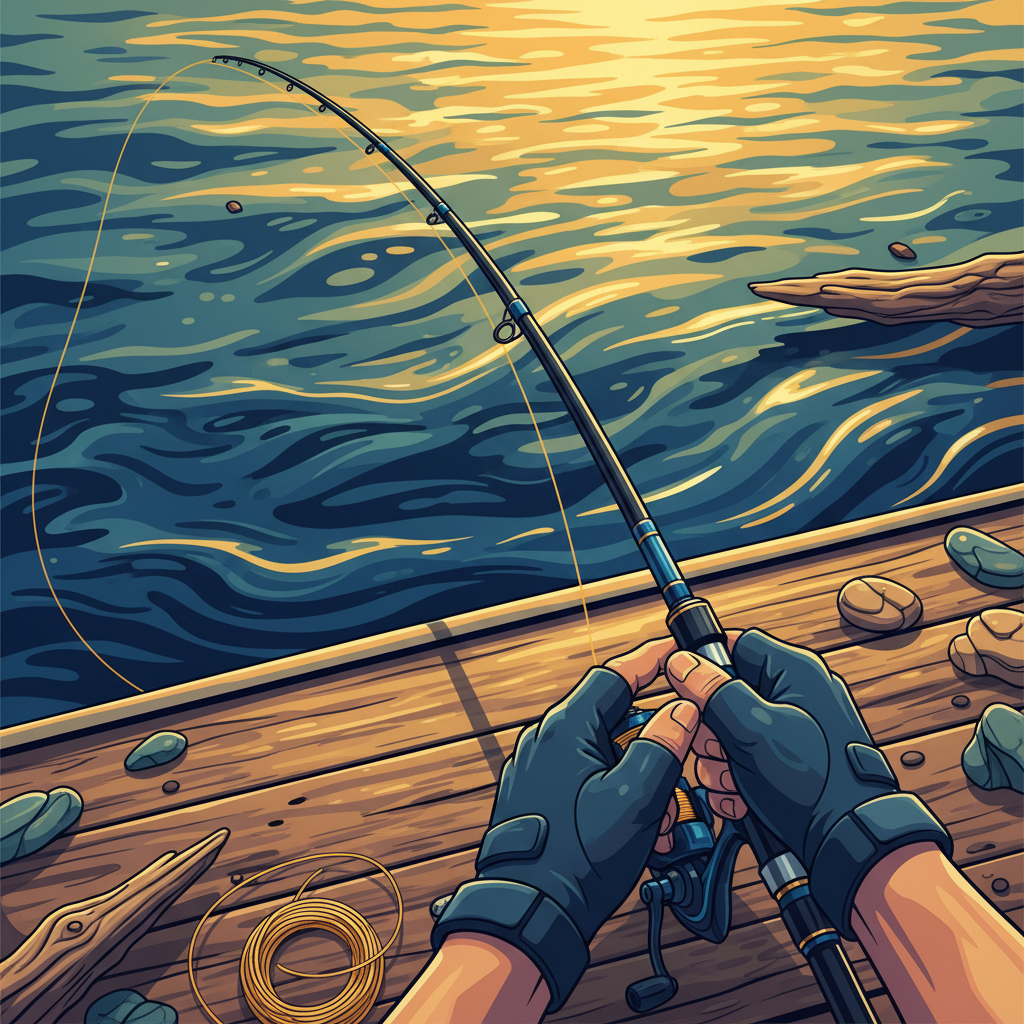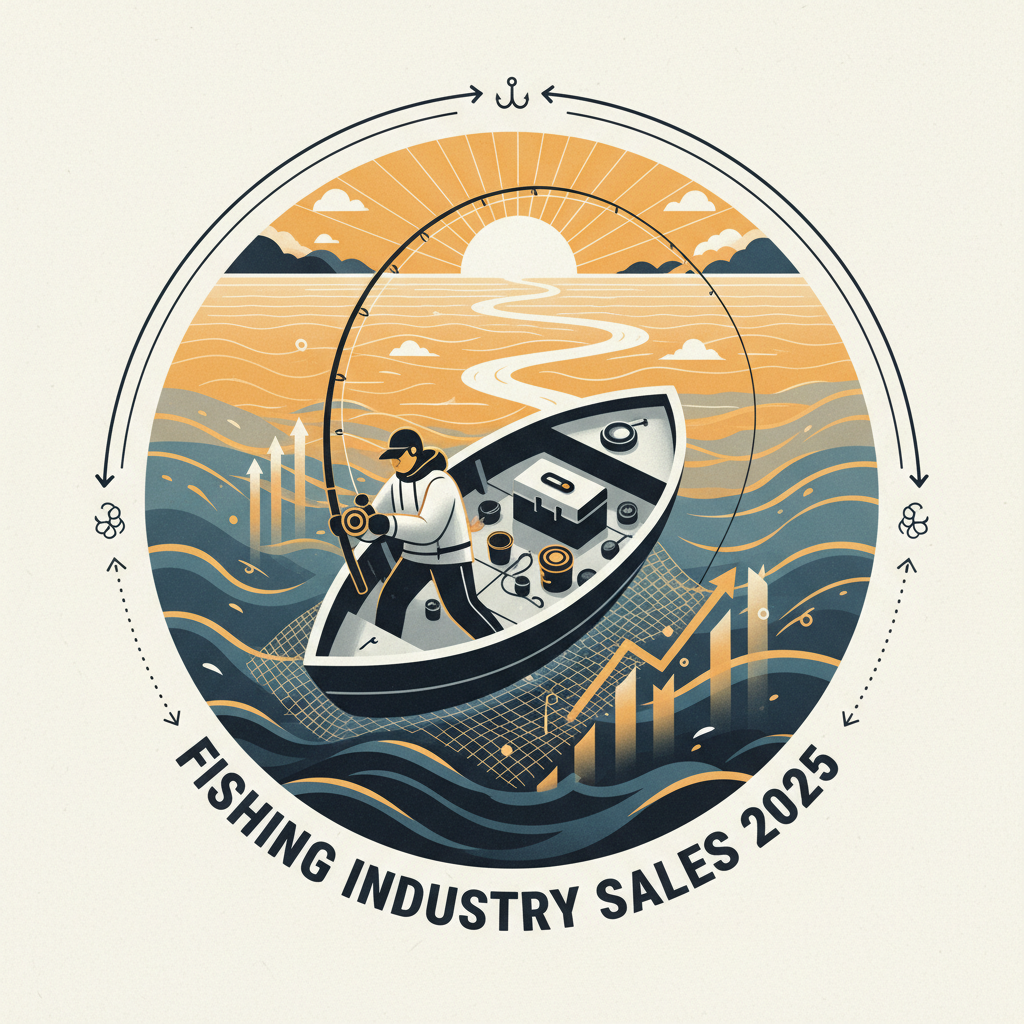Your Cart is Empty
post spawn bass fishing
Post-Spawn Bass Fishing: The Window Every Angler Needs to Master
Quick Answer
Post-spawn bass fishing occurs 2-4 weeks after spawning when bass transition from shallow beds to deeper summer haunts. Target transition zones with reaction baits like crankbaits and swimbaits for recovering females, while using topwater lures near cover for fry-guarding males. Focus on hard-bottom areas, creek channels, and structure adjacent to spawning flats.
Key Takeaways
- Post-spawn bass fishing takes place 2-4 weeks after spawning when bass move from shallow beds to deeper summer areas.
- Anglers should target transition zones using reaction baits such as crankbaits and swimbaits to catch recovering female bass.
- Topwater lures are effective near cover for catching males that are guarding fry.
- Hard-bottom areas, creek channels, and structures near spawning flats are prime locations to focus on.
Table of Contents
- Post-Spawn Bass Fishing: The Window Every Angler Needs to Master
- Bass Lifecycle Phases: Why Post-Spawn Changes Everything
- Understanding Post-Spawn Bass Behavior
- Locating Post-Spawn Bass: Reading the Water
- Post-Spawn Fishing Techniques & Presentations
- Best Lures, Baits, and Gear for Post-Spawn Bass
- Putting It All Together: Your Post-Spawn Game Plan
You know that feeling when you hit the water expecting easy pickings, only to find bass that seem to have vanished overnight? Welcome to post-spawn—the phase that separates weekend warriors from serious stick-holders.
After weeks of predictable spawning patterns, bass scatter like someone flipped a switch. Females that were hammering bed baits yesterday are now suspended over 15 feet of water, while males hang tight to fry balls in two feet of cover. It's bass fishing's equivalent of a curveball, and most anglers strike out.
But here's what I've learned after three decades chasing Florida bass through every post-spawn scenario: this transition period offers some of the year's best fishing—if you adjust your game plan.
Key Insight: Post-spawn bass aren't "turned off"—they're repositioning. Master their movement patterns, and you'll boat more quality fish than during the spawn itself.
The post-spawn phase typically kicks in when water temperatures stabilize between 65-75°F, roughly 2-4 weeks after peak spawning activity. In Florida's Gulf Coast waters where I cut my teeth, that's usually mid-April through May. Up north, you're looking at late May into June.
During this window, bass behavior splits into two distinct patterns:
- Male bass remain shallow, aggressively protecting fry for 2-3 weeks
- Female bass immediately begin migrating toward deeper summer structure
Understanding this behavioral split is crucial. While male bass offer consistent shallow-water action, the real trophies—those post-spawn females—require a completely different approach.
The challenge? Post-spawn bass are dealing with physical stress from the spawn, changing forage patterns, and increasing fishing pressure. They're not the aggressive, predictable fish you targeted during pre-spawn. They're scattered, often suspended, and far more selective about what they'll eat.
But that's exactly why this period rewards tactical anglers. While others struggle with "post-spawn funk," you'll be connecting with quality bass that others can't even locate.
The secret isn't fishing harder—it's fishing smarter. Post-spawn success comes down to reading water, understanding bass movement, and matching your presentation to their current mindset.
Over the next sections, we'll break down the exact tactics that consistently produce during this challenging phase. From locating scattered fish to triggering strikes from lethargic bass, you'll learn the system that turns post-spawn from frustrating to phenomenal.
And here's the kicker—post-spawn bass are often the biggest bass you'll catch all year. Those females that survived the spawn are ready to feed heavily as they transition to summer patterns. Get in their path with the right presentation, and you're looking at personal-best potential.
Ready to crack the post-spawn code? Let's dive into the behavioral patterns that make or break your success during this critical window.
Bass Lifecycle Phases: Why Post-Spawn Changes Everything

To dominate post-spawn fishing, you need to understand how dramatically bass behavior shifts between lifecycle phases. Most anglers fish post-spawn bass like they're still in pre-spawn mode—and wonder why they're not getting bit.
Here's the reality: each phase demands a completely different approach.
Pre-Spawn vs. Post-Spawn: The Complete Behavioral Flip
During pre-spawn, bass are aggressive feeders staging in predictable areas. They're fattening up for the spawn, making them relatively easy targets. Post-spawn flips this script entirely.
Pre-Spawn Advantages
- Bass are actively feeding and aggressive
- Fish concentrate in staging areas
- Predictable movement patterns toward spawning flats
- Larger lures and faster presentations work well
Post-Spawn Challenges
- Bass are scattered and less predictable
- Fish are often lethargic from spawning stress
- Males and females exhibit completely different behaviors
- Requires more finesse and patience
The spawn itself is the bridge between these phases. During spawning, bass are locked onto beds, making them visible but often uncooperative. Post-spawn represents the aftermath—when bass must recover and reposition for summer.
Recognizing the Post-Spawn Transition
Knowing when bass transition into post-spawn is crucial for adjusting your tactics. Here are the key indicators I watch for:
Water Temperature Stability: Post-spawn begins when water temperatures stabilize above 65°F for several consecutive days. This triggers the biological switch that ends spawning activity.
Visible Fry Activity: Look for small clouds of fry around shallow cover. This is your clearest sign that spawning is complete and males are in protection mode.
Bass Body Condition: Post-spawn bass often appear thinner, with visible stress marks. Females especially show the physical toll of spawning.
Feeding Behavior Changes: Bass become more selective, often ignoring lures that worked during pre-spawn. They're not "turned off"—they're just operating under different priorities.
"The biggest mistake I see anglers make is trying to force pre-spawn tactics on post-spawn bass. When you notice fry activity and scattered fish, it's time to completely change your approach." - Based on 30+ years of tournament experience
Understanding these phases isn't just academic—it directly impacts your lure selection, presentation speed, and target areas. Pre-spawn bass want aggressive presentations near staging areas. Post-spawn bass require patience, finesse, and the ability to adapt to their scattered nature.
The key is recognizing that post-spawn isn't a single phase—it's two distinct patterns happening simultaneously. Master both, and you'll stay on fish while others struggle with the transition.
Understanding Post-Spawn Bass Behavior
Post-spawn bass behavior is like reading two completely different playbooks simultaneously. While pre-spawn bass follow predictable patterns, post-spawn fish split into distinct behavioral modes that require separate strategies.
The key insight most anglers miss? Post-spawn isn't about "turned off" bass—it's about bass operating under entirely different priorities. Understanding these priorities is what separates consistent catchers from frustrated casters.
Male vs. Female Bass: Two Different Species
The behavioral split between male and female bass during post-spawn is so dramatic, you're essentially targeting two different species of fish.
Male Bass Behavior
- Remain shallow guarding fry for 2-3 weeks
- Highly aggressive toward perceived threats
- Predictable locations near spawning areas
- Respond well to topwater and reaction baits
Female Bass Behavior
- Immediately migrate toward deeper structure
- Often suspended and lethargic from spawn stress
- Scattered across multiple depth zones
- Require slower, more finesse presentations
Male Bass Strategy: Target fry guarders with aggressive presentations. These fish are protecting their genetic investment and will strike out of pure instinct. I've watched male bass hammer buzzbaits thrown directly over fry balls—they simply can't help themselves.
Female Bass Strategy: Focus on transition zones and deeper structure. These fish are recovering from the physical stress of spawning and beginning their migration to summer haunts. They're feeding, but selectively.
Post-Spawn Migration Routes
Understanding where bass go after spawning is crucial for consistent success. Bass don't randomly scatter—they follow predictable migration routes based on structure, forage, and seasonal patterns.
Primary Migration Routes:
- Creek Channels: Bass use these as highways between shallow spawning areas and deeper summer structure
- Points and Ridges: Underwater extensions that connect spawning flats to main lake structure
- Transition Zones: Areas where shallow cover meets deeper water—perfect ambush points
- Hard-Bottom Areas: Rocky or shell bottom adjacent to spawning areas holds baitfish and recovering bass
Pro Tip: Map the route from spawning beds to summer structure. Bass will stage at key points along this path, creating multiple opportunities as they transition.
The Recovery Factor
Post-spawn bass are dealing with genuine physical stress. Females especially have depleted energy reserves from egg production and spawning activities. This physiological reality drives their behavior more than any other factor.
Recovery Behaviors:
- Reduced Activity: Bass conserve energy, making them less likely to chase fast-moving lures
- Selective Feeding: They want maximum nutrition for minimum effort—think easy meals
- Structure Orientation: Bass seek areas that provide both security and feeding opportunities
- Depth Preferences: Deeper water offers more stable conditions during recovery
This recovery phase typically lasts 2-4 weeks, depending on water temperature and environmental conditions. Warmer water accelerates recovery, while cold fronts can extend the lethargic period.
"I've found that matching your presentation speed to the bass's energy level is critical. High-energy males want aggressive baits, while recovering females prefer slow, easy targets they don't have to work for."
Forage Patterns Drive Location
Post-spawn bass behavior is heavily influenced by available forage. Two key spawning events often coincide with bass post-spawn: shad spawn and bluegill spawn.
Shad Spawn Impact: When shad spawn in shallow water, post-spawn bass will suspend just below the surface activity. This creates explosive topwater opportunities, especially in early morning.
Bluegill Spawn Overlap: Bluegill beds attract post-spawn bass looking for easy protein. Target the edges of bluegill colonies with swimbaits and soft plastics.
The key is recognizing that post-spawn bass are opportunistic feeders. They're not actively hunting like pre-spawn fish, but they won't pass up easy meals that present themselves.
Success in post-spawn fishing comes from understanding that bass behavior is driven by three factors: protection instinct (males), recovery needs (females), and opportunistic feeding (both). Match your approach to these motivations, and you'll connect with fish others can't locate.
Regional variations also play a role. In southern waters, post-spawn transitions happen faster due to warmer temperatures. Northern lakes see extended post-spawn periods, with bass remaining in transitional behavior for weeks longer.
The bottom line? Post-spawn bass aren't difficult—they're different. Once you understand their behavioral patterns, you can predict their locations and trigger strikes with the right presentations.
Locating Post-Spawn Bass: Reading the Water

Finding post-spawn bass requires abandoning everything you know about locating pre-spawn fish. These aren't concentrated schools staging in predictable areas—they're scattered individuals following migration routes and recovery patterns.
The secret is thinking like a bass in transition. They need security, food access, and optimal conditions for recovery. Find areas that provide all three, and you'll locate fish while others run from spot to spot.
Post-Spawn Habitat Selection
Post-spawn bass choose locations based on specific criteria that differ dramatically from spawning areas. Understanding these preferences is crucial for efficient fish-finding.
Transition Zones: The most productive post-spawn areas are where shallow spawning flats meet deeper water. These zones offer bass quick access to both shallow feeding areas and deep security.
- Creek Channel Swings: Where channels curve close to spawning flats
- Points and Ridges: Underwater extensions connecting shallow and deep water
- Drop-offs Adjacent to Beds: Steep breaks within 50 yards of spawning areas
- Submerged Humps: Isolated structure between spawning flats and main lake
Hard-Bottom Areas: Bass prefer firm substrates during post-spawn for several reasons. Hard bottom attracts baitfish, provides stable structure for ambush feeding, and offers better water quality than soft, muddy areas.
Key Insight: Look for hard-bottom areas within 100 yards of spawning beds. These become staging areas where bass rest and feed during their transition to summer patterns.
Depth Patterns and Preferences
Post-spawn bass utilize a wider range of depths than spawning fish, but their depth preferences follow predictable patterns based on water temperature, clarity, and forage availability.
| Water Temperature | Primary Depth Range | Bass Behavior | Best Approach |
|---|---|---|---|
| 65-70°F | 3-8 feet | Slow transition, near beds | Finesse presentations |
| 70-75°F | 5-12 feet | Active migration | Reaction baits |
| 75°F+ | 8-15 feet | Summer pattern emerging | Structure-oriented |
Shallow Water Holdovers: Male bass guarding fry remain in 2-4 feet of water near spawning areas. Target visible cover like laydowns, docks, and vegetation edges.
Mid-Depth Transition Fish: The majority of post-spawn bass hold in 6-12 feet of water along migration routes. These fish are actively feeding but require precise presentations.
Deep Water Pioneers: Early migrants that have already reached summer structure in 15+ feet of water. These fish are often the most aggressive feeders.
Following the Food Chain
Post-spawn bass location is heavily influenced by forage availability. Two key spawning events create location opportunities: shad spawn and bluegill spawn.
Shad Spawn Locations: When shad spawn in shallow water, post-spawn bass suspend just below the surface activity. Look for:
- Riprap banks and seawalls where shad spawn
- Shallow points with rocky or hard bottom
- Creek mouths and coves with current flow
- Areas with visible baitfish activity
Bluegill Spawn Overlap: Bluegill beds provide easy protein for recovering bass. Target the edges of bluegill colonies, not the beds themselves.
The most productive post-spawn areas combine three elements: proximity to spawning areas, access to deeper water, and active forage. Find spots with all three, and you've found a bass magnet.
Developing Location Patterns
Successful post-spawn fishing requires developing a systematic approach to finding fish. Here's my proven method for patterning post-spawn bass:
- Identify Spawning Areas: Start by locating recent spawning beds and fry activity
- Map Migration Routes: Trace the path from beds to deeper summer structure
- Target Staging Areas: Focus on transition zones along these routes
- Test Multiple Depths: Work from shallow to deep until you find active fish
- Replicate Success: Apply the same pattern to similar areas
Efficiency Tips:
- Use electronics to identify structure and baitfish
- Start with reaction baits to cover water quickly
- Mark productive depths and structure types
- Focus on areas with multiple structure elements
"Don't waste time fishing empty water. Post-spawn bass are structure-oriented and predictable once you understand their migration patterns. Find the highway between beds and summer haunts, and you'll find fish."
The key to consistent post-spawn success is understanding that bass location follows logical patterns. They're not randomly scattered—they're following predictable routes based on structure, forage, and seasonal needs. Master these patterns, and you'll locate fish while others struggle with the transition.
Post-Spawn Fishing Techniques & Presentations
Post-spawn bass require a completely different tactical approach than spawning fish. The key is matching your presentation to the bass's energy level and behavioral state—aggressive for fry guarders, finesse for recovering females, and reaction for transitioning fish.
Success comes from reading the situation and adapting your technique accordingly. Here's how to trigger strikes from post-spawn bass when others are struggling.
Reaction Baits: Covering Water Efficiently
Reaction baits excel during post-spawn because they allow you to cover water quickly while triggering instinctive strikes from scattered bass. These presentations work best for locating active fish along migration routes.
Crankbaits for Transition Zones: Medium-diving crankbaits (6-10 feet) are perfect for working transition areas where bass stage during their migration. The key is matching the diving depth to the structure you're targeting.
- Square-bill crankbaits for shallow cover and fry guarders
- Medium divers for points and channel swings
- Deep divers for main lake structure
- Lipless crankbaits for suspended fish
Spinnerbaits and Swimbaits: These baits shine when bass are relating to cover during post-spawn. The flash and vibration trigger strikes from bass that might ignore slower presentations.
Retrieve Tip: Vary your retrieve speed every few cranks. Post-spawn bass often follow baits before striking, and speed changes trigger commitment.
Jerkbaits for Suspended Fish: When bass suspend during their transition, jerkbaits become deadly effective. The erratic action mimics injured baitfish, triggering strikes from lethargic bass. For more on maximizing jerkbait effectiveness, see our guide on jerkbait bass fishing.
Topwater Approaches: Targeting Fry Guarders
Topwater fishing during post-spawn can be explosive, especially when targeting male bass guarding fry. These fish are hardwired to attack anything threatening their offspring.
Buzzbaits Over Fry: Nothing triggers a male bass like a buzzbait thrown directly over a fry ball. The surface commotion represents a predator threat that bass cannot ignore.
Walking Baits for Edges: Work walking baits along the edges of spawning areas where males patrol. The side-to-side action mimics a fleeing baitfish.
| Topwater Bait | Best Situation | Retrieve Style | Target Area |
|---|---|---|---|
| Buzzbait | Fry guarders | Steady retrieve | Over fry balls |
| Walking Bait | Aggressive males | Walk-the-dog | Bed edges |
| Popper | Calm conditions | Pop and pause | Points and flats |
| Frog | Heavy cover | Stop and go | Vegetation edges |
Timing Topwater Success: Early morning and late evening produce the most topwater strikes during post-spawn. Water temperature and weather conditions also play crucial roles.
Finesse Techniques: When Bass Won't Commit
When post-spawn bass are lethargic or pressured, finesse presentations become essential. These techniques work best for recovering females and fish in transition zones.
Wacky Rigged Soft Plastics: The subtle action of a wacky-rigged worm is perfect for post-spawn bass that want an easy meal. Target individual pieces of cover and let the bait do the work.
Drop Shot Precision: When you locate bass on electronics but can't get them to bite, a drop shot allows precise presentation at the exact depth. This technique excels for suspended fish.
Finesse fishing during post-spawn is about patience and precision. Slow down your presentations and give bass time to make up their minds. A 10-second pause often triggers strikes that faster retrieves won't.
Shakey Head Effectiveness: The dragging action of a shakey head mimics bottom-dwelling forage that post-spawn bass prefer. Work it slowly along transition zones and structure edges.
"Post-spawn bass often follow finesse baits for long distances before striking. Don't set the hook on the first tap—let them take it and swim away before setting the hook."
Line Selection for Post-Spawn Success
Your line choice can make or break post-spawn presentations. The right line enhances lure action while providing the strength needed for fighting fish around cover.
Braided Line Advantages: For post-spawn fishing, braided line offers superior sensitivity and hook-setting power. The zero-stretch properties help you feel subtle bites from lethargic bass.
Our Green 8X Ultra Performance braid provides the perfect combination of strength and stealth for post-spawn conditions. The moss-green color blends with vegetation while maintaining visibility for line watching.
Braid Benefits
- Superior sensitivity for detecting light bites
- Instant hook-setting power
- Smaller diameter cuts through cover
- Maintains strength in abrasive conditions
Considerations
- May be too visible in clear water
- Requires fluorocarbon leader for finesse
- Can be too aggressive for spooked fish
- Needs proper knot selection
Fluorocarbon Leaders: When fishing clear water or pressured bass, add a fluorocarbon leader to your braid. This combination provides stealth with sensitivity.
For topwater presentations targeting fry guarders, our Optic Orange 8X provides maximum visibility for line watching while maintaining the strength needed for aggressive strikes.
Adapting to Conditions and Pressure
Post-spawn bass behavior changes dramatically with weather conditions and fishing pressure. Successful anglers adapt their presentations accordingly.
Cold Front Adjustments: Cold fronts shut down post-spawn bass activity. Switch to smaller baits, slower presentations, and target deeper structure where bass seek stability.
High Pressure Modifications: On heavily pressured lakes, downsize your presentations and use natural colors. Bass become more selective and require subtle approaches.
Wind Advantages: Wind creates current and oxygenation that activates post-spawn bass. Use the wind to your advantage by positioning your boat for optimal casting angles.
Weather Pattern: Stable weather patterns produce the most consistent post-spawn fishing. Avoid fishing during major weather transitions when bass become inactive.
The key to post-spawn success is versatility. Start with reaction baits to locate active fish, then switch to finesse techniques for pressured or lethargic bass. Match your presentation to the bass's energy level, and you'll trigger strikes when others can't buy a bite.
Best Lures, Baits, and Gear for Post-Spawn Bass

Post-spawn bass fishing demands specific lure selections and gear setups that match the unique challenges of this transitional period. The right equipment can mean the difference between connecting with scattered fish and going home empty-handed.
Here's your complete arsenal for post-spawn success, tested on everything from Florida grass flats to northern rock piles.
Hard Baits: Triggering Reaction Strikes
Squarebill Crankbaits: The ultimate fry guarder bait. The wide wobble and deflection off cover triggers aggressive strikes from male bass protecting their offspring. Target shallow cover, laydowns, and vegetation edges.
Medium-Diving Crankbaits: Perfect for working transition zones where post-spawn bass stage. The 6-10 foot diving depth hits the sweet spot for bass moving between shallow and deep water.
Lipless Crankbaits: Excel when bass suspend during their post-spawn migration. The tight vibration and sinking action allow you to work multiple depth zones with one bait.
Jerkbaits: Deadly for suspended bass that follow but won't commit to faster-moving baits. The erratic action and pause capability trigger strikes from lethargic fish.
Soft Plastics: Finesse and Power
Wacky-Rigged Worms: The subtle action and slow fall rate make this presentation irresistible to post-spawn bass. Use 4-5 inch worms in natural colors for pressured fish.
Texas-Rigged Creatures: Perfect for working cover where post-spawn bass hide. The weedless presentation allows you to fish heavy structure without constant hang-ups.
Drop Shot Rigs: When you mark fish on electronics but can't get them to bite, drop shotting puts the bait directly in their face. Essential for suspended bass.
Swimbaits: Mimic the baitfish that post-spawn bass target. Work them along migration routes and transition zones for consistent strikes.
Color Selection: Natural colors (green pumpkin, watermelon, brown) work best for pressured post-spawn bass. Save bright colors for stained water or aggressive fish.
Topwater Arsenal: Surface Explosions
Buzzbaits: Nothing beats a buzzbait for triggering fry guarders. The surface commotion represents a threat that male bass cannot ignore. Work them over visible fry balls for explosive strikes.
Walking Baits: The side-to-side action mimics fleeing baitfish. Work them along spawning area edges and points where bass patrol.
Poppers: Excellent for calm conditions when subtle surface action works better than aggressive presentations. The pop-and-pause retrieve drives bass crazy.
Frogs: Essential for fishing heavy cover where post-spawn bass hide. The weedless design allows you to work areas other baits can't reach.
Gear Recommendations: Rods and Reels
Versatile Rod Selection: Post-spawn fishing requires multiple techniques, so your rod selection should cover the spectrum from finesse to power fishing.
- Medium-Heavy Casting Rod (7'0"): Perfect for crankbaits, spinnerbaits, and topwater
- Medium Spinning Rod (6'6"): Ideal for finesse presentations and light line techniques
- Heavy Casting Rod (7'6"): Essential for working heavy cover and big swimbaits
- Medium-Light Spinning Rod (6'0"): Drop shot and wacky rig specialist
Reel Considerations: High-speed reels (7.1:1 or higher) help you cover water quickly with reaction baits, while slower reels (6.3:1) provide better control for finesse techniques.
Line Selection: Matching Conditions
Your line choice directly impacts lure action and fish-fighting capability. Post-spawn conditions demand specific line characteristics for optimal performance.
Braided Line Applications: The zero-stretch properties of braid provide superior sensitivity for detecting light bites from lethargic post-spawn bass.
Our Bahama Blue 8X Ultra Performance offers the perfect balance of strength and visibility for post-spawn conditions. The bright blue color provides excellent line watching for topwater presentations while maintaining the 8-strand smoothness needed for long casts.
| Technique | Line Type | Recommended Product | Key Benefit |
|---|---|---|---|
| Topwater | Braid | Optic Orange 8X | Maximum visibility |
| Crankbaits | Braid + Fluoro | Green 8X + Leader | Stealth with sensitivity |
| Finesse | Fluorocarbon | Fluorocarbon Leader | Invisibility |
| Heavy Cover | Braid | Moss Camo 8X | Abrasion resistance |
Fluorocarbon Leaders: When fishing clear water or pressured bass, add a 2-3 foot fluorocarbon leader to your braid. This combination provides stealth without sacrificing sensitivity.
For heavy cover situations, our Moss Camo 8X provides the perfect blend of camouflage and strength. The earth-tone pattern disappears in vegetation while maintaining the abrasion resistance needed for fishing structure.
Hook Upgrades
Frequently Asked Questions
What is the best bait for post spawn bass?
During post-spawn, bass are recovering and often less aggressive, making soft plastics like worms, creature baits, and finesse jigs top choices. These baits mimic crawfish and other natural forage bass target while conserving energy, increasing your hookup chances without spooking pressured fish.
What do bass do during post-spawn?
Post-spawn bass shift from shallow nesting areas to rest and rebuild energy reserves. They reduce aggressive behavior, focus on feeding to recover from spawning stress, and often transition to deeper or structured water to avoid predators and warmer surface temps.
Where are the bass in post spawn?
Post-spawn bass move off the shallow flats and beds to deeper cover like points, creek channels, submerged timber, and rock piles. Targeting these transition zones where baitfish and crawfish gather will put you in prime position for bites.
How deep is post-spawn bass?
Bass typically hang between 6 to 15 feet deep during post-spawn, depending on water clarity and temperature. Look for gradual depth breaks and structure holding cooler water and forage—these depths offer the balance bass need for recovery and feeding.
What water temp is post spawn for bass?
Post-spawn usually occurs when water temperatures range from 60°F to 70°F. This window signals bass have finished spawning and are moving to recovery zones; precise timing varies by region, but this temp range is your sweet spot for post-spawn tactics.
What is the number 1 bait for bass?
While preferences vary by conditions, a quality 8-strand braided line rigged with a soft plastic worm or jig remains the number one bait setup for bass. It offers stealth, natural presentation, and the strength to handle aggressive hooksets and follow-up fights with minimal line stretch.




